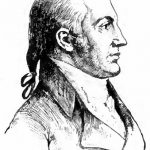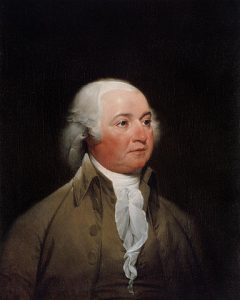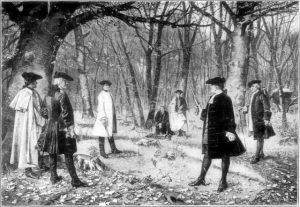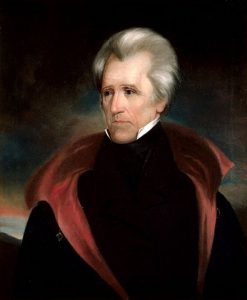Image: George Washington
This past Friday, January 20, Donald Trump became the 45th President of the United States. The election was close. The popular vote went to Democratic candidate Hillary Clinton, but the Electoral Vote – the vote that actually elects the president went to Donald Trump.
Donald Trump — Republican — 304 Electoral Votes — 62,980,160 Popular Vote, 45.9% Pop. Vote
Hillary Clinton — Democrat — 227 Electoral Votes — 65,845,063 Popular Vote, 48% Pop. Vote
Not only was the election close, but many Americans find it impossible to comprehend how the candidate with a majority of the popular vote could possibly lose the presidential election.
So where did the Electoral College come from?
The ELECTORAL COLLEGE is the result of substantial debate at the Constitutional Convention of 1787 — a time of very different sensibilities. Delegates couldn’t envision of time when the United States would have either political parties or universal voting rights. Most states restricted the vote to those citizens who held property.
Everyone at the Constitutional Convention assumed George Washington would be the first president – as indeed he was. Washington was the only name most Americans knew. The delegates worried that after Washington, people wouldn’t know of viable candidates outside of their own state. They thought of the Electors as a special type of Congress named by each state. A state’s number of Electors would be determined by the total number of senators and representatives elected by each state. This would allow each state’s population to be a factor.
Current Electoral College Map
Originally, the Elector could vote for any two candidates as long as one was not from their home state. The man with the most votes would be president. The first runner-up would be vice-president. If no one held a winning majority, the election would go into the House of Representatives (the only body directly elected by the voters). Each state would have one vote. The Founders expected the Electoral College to function more as a nominating body with the House making the actual selection of president.
TODAY each political party within a state presents a slate of Electors. When voters cast their ballots for President, they also elect the Electors.* The Electors aren’t required to vote according to a state’s popular vote, but they usually do.
The tension between the numbers in the voting population and the total number of a state’s congressional delegation is meant to prevent more populous states from dominating smaller states.
CONTROVERISAL ELECTIONS
The Trump-Clinton Election is the most recent in a long line of controversial, closely-fought elections. I count eight such elections, though others might point to more or less. These elections demonstrate the changing electorate as Americans debate the future of the nation. I propose to look at four this week and four next week.
1796 ELECTION
George Washington served two terms as president, which he thought was enough for any man. Since Washington took office in 1790, factions had developed in the electorate. Americans didn’t have formal political parties, but they were beginning to coalesce around key political figures.
Since it wasn’t appropriate then for candidates to openly campaign, their friends and allies did the job. Each state chose Electors in a different way and Electors could vote how they wished – even for candidates of opposing “parties.” Candidates John Adams and Thomas Jefferson had widely differing views on almost everything and could hardly stand each other.
John Adams — Federalist — 71 Electoral Votes, 51.1%
Thomas Jefferson — Democratic-Republican — 68 Electoral Votes 48.9%
Charles Pinckney — Federalist — 59 Electoral Votes
Aaron Burr — Democratic-Republican — 30 Electoral Votes
1800 ELECTION – THE REVOLUTION OF 1800
The Founders thought that once a candidate was elected to office, everyone would put aside their differences in favor of the “greater good.” This proved not to be the case. By 1800 Federalists and Democratic-Republicans were clearly in opposition. The Federalist party also split between Adams and Alexander Hamilton.
The campaign became decidedly uncivil. Federalists attacked Jefferson as a godless supporter of the French Revolution who would unleash bloody terror on the country. Democratic-Republicans charged Adams was a fool and a tyrant who wanted people to call him “Your Excellency.”
Thomas Jefferson — Democratic-Republican — 73 Electoral Votes
Aaron Burr — Democratic-Republican — 73 Electoral Votes
John Adams — Federalist — 65 Electoral Votes
Charles Pinckney — Federalist — 64 Electoral Votes
ELECTORAL VOTE TIED – THE HOUSE VOTES
 Jefferson and Burr tied at 73 Electoral Votes each which threw the election into the Federalist controlled House of Representatives. This presents an interesting situation since the tied vote was between Democratic-Republicans. Thirty-five ballots were cast without result. Finally Alexander Hamilton convinced a few delegations who refused to vote for a Democratic-Republican to turn in blank ballots. This allowed the victory to go to Jefferson. Burr was enraged. In 1804 Burr killed Hamilton in a duel.
Jefferson and Burr tied at 73 Electoral Votes each which threw the election into the Federalist controlled House of Representatives. This presents an interesting situation since the tied vote was between Democratic-Republicans. Thirty-five ballots were cast without result. Finally Alexander Hamilton convinced a few delegations who refused to vote for a Democratic-Republican to turn in blank ballots. This allowed the victory to go to Jefferson. Burr was enraged. In 1804 Burr killed Hamilton in a duel.
1804 Burr-Hamilton Duel
1824 ELECTION – THE CORRUPT BARGAIN
Politics changed after 1800. More people had voting rights. The 12th Amendment to the Constitution was ratified in 1804. This required that the president and vice-president be from the same political party. It also stipulated that when an election was thrown into the House of Representatives, only the top three candidates would be considered.
There were four candidates in 1824. John Quincy Adams, son of the second president, would become the last president to wear knee-breeches. Adams’ primary rival was Andrew Jackson, known as the victor at the Battle of New Orleans. There were two other candidates: William Crawford and Henry Clay.
Andrew Jackson — Democratic-Republican — 99 Electoral Votes, 37.9% — 151,271 Popular Votes 41.3%
John Quincy Adams — Democratic-Republican — 84 Electoral Votes, 37.9% — 113,122 Popular Votes, 30.9%
William Crawford — Democratic-Republican — 41 Electoral Votes, 15.7% — 40,856 Popular Votes, 11.2%
Henry Clay — Democratic-Republican — 37 Electoral Votes, 14.2% — 47,531 Popular Votes, 13%
Jackson had a majority of Electoral Votes and popular votes, but his percentage of Electoral Votes tied with those of John Quincy Adams. The election went to the House of Representatives. Henry Clay was eliminated and told his supporters to give their votes to John Quincy Adams. Jackson supporters believed Clay had stolen Jackson’s election. Their suspicions were confirmed when Adams named Clay as his Secretary of State.
1828 ELECTION
Jackson supporters immediately began their campaign for the 1828 election. Campaign Manager Martin van Buren put together a political coalition that held until 1860. Jackson’s party became the Democratic Party on a platform of States Rights and Popular Democracy.
Jackson supporters made much of their candidate’s nickname – Old Hickory. Jackson, they said, was tough as hickory wood. Supporters put up hickory poles. They distributed hickory toothpicks and held barbecues fired by hickory chips. They attacked Adams for his legalism, for marrying a foreign-born wife, and spread the rumor that during his diplomatic career Adams procured American virgins for the Russian czar.
Adams’ supporters accused Jackson of murders, personal violence, and living with his wife before her divorce was final.
Andrew Jackson — Democratic — 178 Electoral Votes, 68.2% — 642,553 Popular Votes, 56.1%
John Quincy Adams — National-Republican — 83 Electoral Votes, 31.8% — 500,897 Popular Votes, 43.6%
Between 1796 and 1828 the United States moved from a largely agrarian economy to one of booming commerce and expansion. The electorate expanded to include most white males. The physical geography of the country grew from a boundary at the Mississippi River to one that extended that reached westward into the Northwest Territories. An increasing number of Americans concluded that slavery was not compatible with the concept that “all men are created equal.” Elections became more volatile. The 1860 presidential election would trigger what some historians call the Second American Revolution.
???
*Nebraska and Maine have a proportional distribution of Electors.
Images from Wikimedia Commons:
George Washington by Edward Savage. U.S. Public Domain
Electoral College Map for 2012, 2016, and 2020. U.S. Public Domain
John Adams by John Trumbull. U.S. Public Domain
Thomas Jefferson by Rembrandt Peale. U.S. Public Domain
Aaron Burr Drawing. U.S. Public Domain
John Quincy Adams by George Peter Alexander Healy. U.S. Public Domain
Andrew Jackson by Ralph Eleaser Whiteside Earl. U.S. Public Domain
Data Taken From:
American Presidency Project.
The Miller Center.
U.S. Electoral College

Sandra Wagner-Wright holds the doctoral degree in history and taught women’s and global history at the University of Hawai`i. Sandra travels for her research, most recently to Salem, Massachusetts, the setting of her new Salem Stories series. She also enjoys traveling for new experiences. Recent trips include Antarctica and a river cruise on the Rhine from Amsterdam to Basel.
Sandra particularly likes writing about strong women who make a difference. She lives in Hilo, Hawai`i with her family and writes a blog relating to history, travel, and the idiosyncrasies of life.







